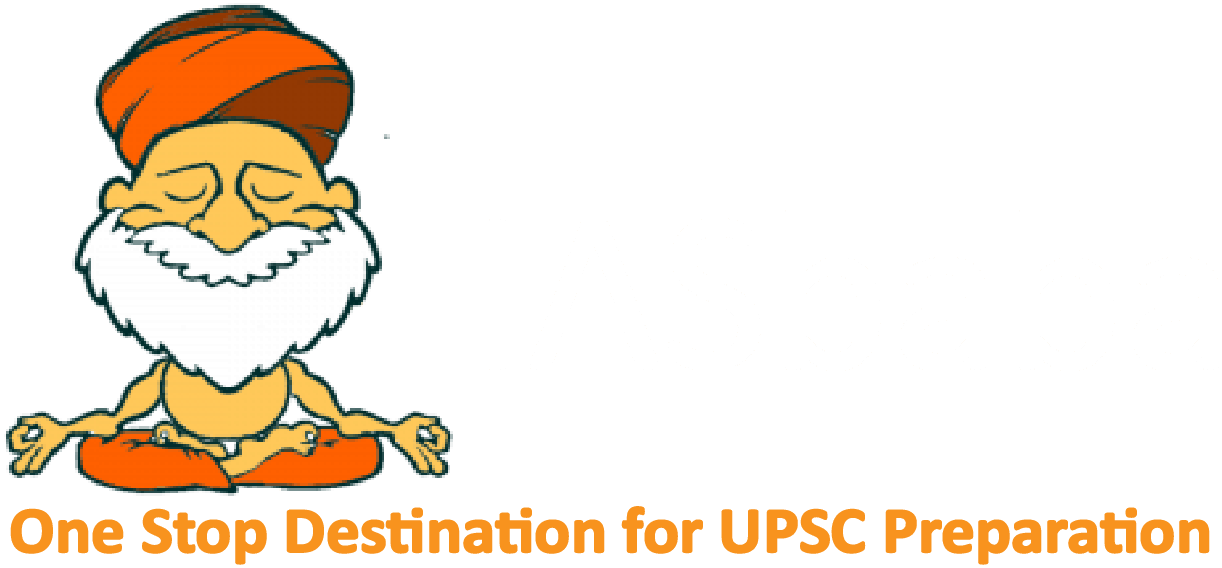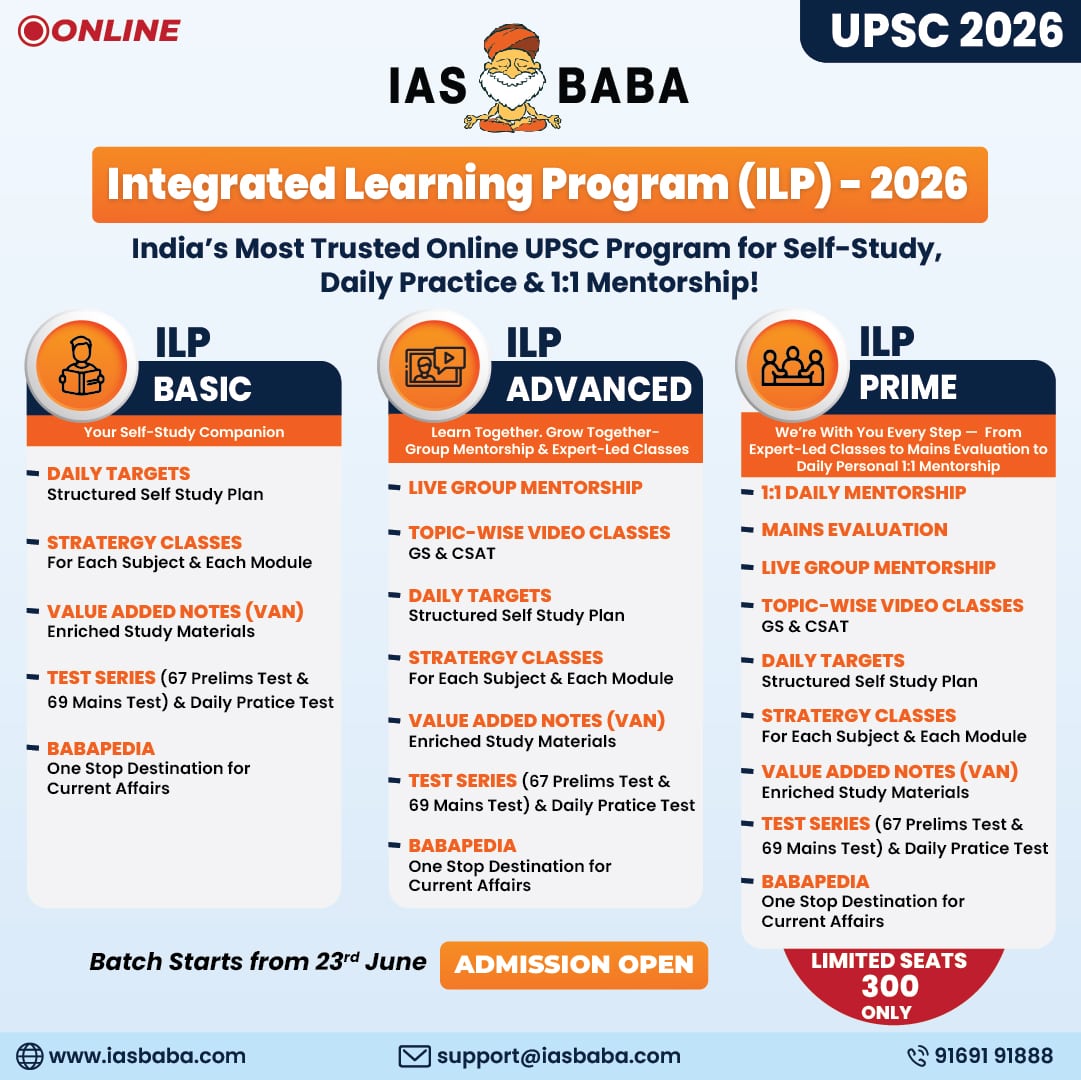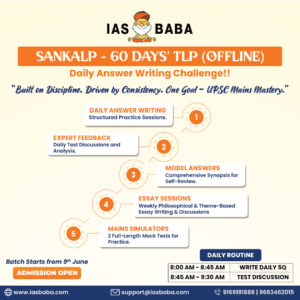IASbaba's Daily Current Affairs Analysis
Archives
(PRELIMS & MAINS Focus)
Syllabus:
- Prelims – GS 2
Context: The Vice-President of India, Shri Jagdeep Dhankhar, called for a national debate on the shift from democracy to Emocracy, saying, “National debate is required so that we take note of shift from Democracy to Emocracy. Emotion-driven policies, emotion-driven debates, discourses threaten good governance.”
Background: –
- “Historically, populism is bad economics. And once a leader gets attached to populism it is difficult to get out of the crisis. The central factor must be the good of the people, the largest good of the people, the lasting good of the people”, V P said.
Relationship between populism and good governance
- The relationship between populism and good governance is complex, with both positive and negative implications.
- Understanding Populism :A political ideology that seeks to represent the interests of the common people against a perceived elite.
- Characteristics:
- Direct appeal to the masses
- Charismatic leadership
- Anti-establishment rhetoric
- Simplified solutions to complex problems
- Types of Populism:
- Left-Wing Populism: Advocates wealth redistribution and state intervention (e.g., Latin American leaders like Hugo Chávez).
- Right-Wing Populism: Focuses on nationalism, cultural identity, and anti-immigration policies (e.g., Donald Trump, European right-wing parties).
- Understanding Good Governance: Governance that ensures efficient, accountable, participatory, and transparent administration.
- Key Features (As per UNDP):
- Transparency: Open decision-making and information availability.
- Accountability: Responsibility of public institutions towards citizens.
- Rule of Law: Fair legal framework enforced impartially.
- Inclusiveness: Equal participation of all groups in governance.
- Effectiveness and Efficiency: Best use of resources for public welfare.
Populism vs. Good Governance: Conflict and Challenges
- Short-Term Popularity vs. Long-Term Institutional Strengthening: Populist leaders may focus on immediate benefits rather than sustainable policies.
- Erosion of Institutional Autonomy: Populists may undermine democratic institutions and weaken democratic Norms.
- Fiscal Populism: Excessive subsidies, loan waivers, and unsustainable welfare schemes burden the economy.
- Undermining Expertise and Bureaucracy: Populists often bypass expert opinions, leading to flawed policy decisions.
Positive Aspects of Populism in Governance
- Increased Political Participation: Populist leaders mobilize the masses, bringing political awareness.
- Focus on Marginalized Groups: Populist movements often highlight the concerns of the underprivileged.
- Policy Innovation: Pressure from populist movements can lead to new welfare policies.
Way Forward
- Institutional Checks and Balances: Strengthening judiciary and autonomous bodies to prevent executive overreach.
- Evidence-Based Policymaking: Ensuring policy decisions are backed by data rather than populist rhetoric.
- Strengthening Democratic Norms: Promoting media freedom, civil society participation, and deliberative democracy.
- Fiscal Responsibility: Ensuring populist welfare policies are financially sustainable.
- Public Awareness: Educating citizens about the long-term impacts of populist policies.
Source: PIB
Syllabus:
- Prelims – CURRENT EVENT
Context: Union Minister for Electronics & Information Technology, Railways, and Information & Broadcasting, Shri Ashwini Vaishnaw marked a major milestone in India’s AI journey with the launch of several key initiatives under the IndiaAI Mission during its anniversary celebration. Key among the newly introduced initiatives is AIKosha: IndiaAI Datasets Platform.
Background: –
- The launch of AIKosha signifies a major step in democratizing AI access, enabling research-driven innovation, and strengthening India’s global AI leadership.
Key takeaways
- AIKosha, launched by India’s Ministry of Electronics and Information Technology (MeitY), is a comprehensive platform designed to streamline access to high-quality, non-personal datasets, AI models, and development tools, thereby fostering AI innovation across the nation.
Key Features of AIKosha:
- Extensive Repository: The platform hosts over 300 datasets and more than 80 AI models from 12 organizations, providing a rich resource for model builders and developers to create India-centric AI solutions.
- AI Sandbox Capabilities: AIKosha offers integrated development environments equipped with tools and tutorials, enabling users to experiment, develop, and refine AI applications effectively.
- Secure and Accessible: The platform ensures data security through features like data encryption (both at rest and in motion), secure APIs, and firewalls for real-time threat filtering. It also emphasizes content discoverability and AI readiness scoring of datasets to assist users in selecting appropriate resources.
Objective and Impact:
- By providing a unified portal for seamless access to datasets, models, and tools, AIKosha aims to democratize AI development in India. It supports students, startups, researchers, academia, and government departments in building AI applications tailored to India’s diverse linguistic and cultural landscape.
- This initiative is part of the broader IndiaAI Mission, which seeks to establish a comprehensive ecosystem catalyzing AI innovation through public-private partnerships.
Source: PIB
Syllabus:
- Prelims & Mains – CURRENT EVENT
Context: The Supreme Court criticised the functioning of the Real Estate Regulatory Authority (RERA) and termed it as “disappointing”.
Background:
- This isn’t the first time the court has criticised RERA’s performance. In September 2024, the Supreme Court described RERA as a “rehabilitation centre for former bureaucrats,” accusing it of undermining the Act’s purpose.
Key takeaways
- The Real Estate Regulatory Authority (RERA) was established under the Real Estate (Regulation and Development) Act, 2016 to regulate and promote transparency in the real estate sector.
- RERA is applicable to residential and commercial real estate projects, including plotted developments.
- Objectives of RERA
- Regulate the real estate sector and improve accountability.
- Ensure timely completion of projects and prevent delays.
- Promote transparency in property transactions.
- Protect buyers’ rights by setting grievance redressal mechanisms.
- Encourage investment by creating a reliable framework.
Key Provisions of the RERA Act, 2016
- Establishment of RERA
- States and Union Territories must establish a Real Estate Regulatory Authority for grievance redressal.
- Functions include project registration, dispute resolution, and policy implementation.
- Mandatory Project Registration : Developers must register real estate projects (above 500 sq. m. or 8 apartments) before advertising or selling. Projects without RERA registration are illegal.
- Escrow Account Requirement : Builders must deposit 70% of funds collected from buyers into a separate escrow account to ensure funds are used for the same project.
- Timely Completion & Compensation : Developers must complete projects on time, failing which they face penalties or compensation liabilities.
- Consumer Protection & Rights
- Buyers have the right to full project details, possession timeline, and compensation for delays.
- False advertising by developers can lead to refunds or penalties.
- Establishment of Real Estate Appellate Tribunal : If dissatisfied with RERA decisions, consumers can approach the Real Estate Appellate Tribunal.
Source: Economic Times
Syllabus:
- Mains – ECONOMY
Context: India should not rush into full capital account convertibility at its current per capita income level of about $2,570, Arvind Panagariya, Chairman of the 16th Finance Commission, has said.
Background: –
- Instead, the country should consider this reform only when per capita income reaches $8,000-10,000, he suggested.
Key takeaways
- Capital Account Convertibility (CAC) refers to the freedom to convert local financial assets into foreign financial assets and vice versa at market-determined exchange rates.
- It is part of the Balance of Payments (BoP), which consists of the current account (trade in goods and services) and the capital account (financial transactions).
- Types of Convertibility:
- Current Account Convertibility: Allows free exchange of currency for trade in goods and services.
- Capital Account Convertibility: Allows free exchange of currency for financial transactions like investments, loans, and acquisitions.
Importance of Capital Account Convertibility:
- Foreign Investment: CAC attracts foreign investment and capital inflows boosting economic growth.
- Global Integration: It facilitates integration with global financial markets, enabling access to international capital.
- Economic Efficiency: CAC promotes efficient allocation of resources by allowing capital to flow to its most productive uses.
Challenges and Risks of Capital Account Convertibility:
- Volatility: Free capital flows can lead to exchange rate volatility and financial instability, as seen during the Asian Financial Crisis (1997).
- Capital Flight: In times of economic uncertainty, investors may withdraw capital rapidly, leading to currency depreciation and economic instability.
- Monetary Policy Constraints: CAC limits the ability of the central bank to control domestic interest rates and money supply, as it must consider global financial conditions.
- Speculative Attacks: Countries with weak economic fundamentals may face speculative attacks on their currency, leading to crises.
India’s Approach to Capital Account Convertibility:
- Tarapore Committee (1997):
- The S.S. Tarapore Committee was set up by the Reserve Bank of India (RBI) to recommend a roadmap for CAC in India.
- The committee suggested a three-phase approach with preconditions like fiscal consolidation, low inflation, and a strong financial system.
- Partial Convertibility:
- India has adopted a gradual and cautious approach to CAC, allowing partial convertibility with certain restrictions.
- For example, while FDI and FPI are allowed, there are limits on the amount of capital that can be moved in and out of the country.
- Current Status:
- India has full current account convertibility but partial capital account convertibility.
- The Liberalized Remittance Scheme (LRS) allows individuals to remit up to $250,000 per year for permissible transactions.
Source: Hindu Businessline
Syllabus:
- Prelims – CURRENT EVENT
Context: The population of Ongole cattle is dwindling in India, while its numbers and prestige are increasing in countries like Brazil.
Background: –
- In February, an Ongole purebred cow was sold for a whopping 4.38 million USD (25.7 million Brazilian Real or INR 40 crore) in Brazil.
Key takeaways
- Ongole Cattle are a renowned breed of indigenous cattle native to India, known for their strength, endurance, and adaptability. They are primarily found in the Prakasam district of Andhra Pradesh, particularly in the Ongole region, from which they derive their name.
- Physical Characteristics:
- Size: Ongole cattle are large and robust, with a well-built muscular frame.
- Color: They are typically white or light gray, with a distinctive hump on their back.
- Dewlap: They have a prominent dewlap (loose skin under the neck), which helps them tolerate hot climates.
- Adaptability:
- Ongole cattle are highly adaptable to tropical climates and can thrive in harsh, dry conditions.
- They are resistant to many tropical diseases, making them ideal for regions with challenging environments.
- Utility:
- Draught Purposes: Ongole cattle are primarily used as draught animals for plowing and transportation due to their strength and endurance.
- Milk Production: While not high-yielding milk producers, they provide a moderate amount of milk with high fat content.
- Temperament: Ongole cattle are known for their docile nature, making them easy to handle and manage.
Source: Indian Express
Practice MCQs
Q1.) Which of the following cattle breeds is native to the Prakasam district of Andhra Pradesh?
a) Gir
b) Sahiwal
c) Ongole
d) Red Sindhi
Q2.) Which of the following statements regarding the Real Estate Regulatory Authority (RERA) is correct?
a) RERA registration is mandatory for all real estate projects, regardless of size.
b) Developers must deposit at least 70% of the buyers’ funds into an escrow account to prevent fund diversion.
c) RERA is applicable only to residential real estate projects and excludes commercial properties.
d) The decisions of RERA are final and cannot be challenged in any tribunal.
Q3.) With reference to Capital Account Convertibility (CAC), consider the following statements:
- CAC allows unrestricted exchange of domestic currency for foreign currency in financial transactions like investments and loans.
- The S.S. Tarapore Committee (1997) recommended an immediate and full adoption of CAC in India.
- India currently follows a policy of full capital account convertibility.
Which of the statements given above is/are correct?
(a) 1 only
(b) 1 and 2 only
(c) 1 and 3 only
(d) 2 and 3 only
Comment the answers to the above questions in the comment section below!!
ANSWERS FOR ’ Today’s – Daily Practice MCQs’ will be updated along with tomorrow’s Daily Current Affairs
ANSWERS FOR 6th March – Daily Practice MCQs
Q.1) – b
Q.2) – c
Q.3) – c











